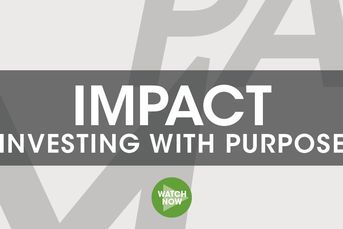Sickened by market conditions? You aren’t alone
Declining stocks worry people sick, if hospital records are any guide. A new study has found that hospitalizations rise on days when shares fall, and “people are hospitalized disproportionately for mental conditions.”
Declining stocks worry people sick, if hospital records are any guide.
A one-day drop in equities of around 1.5% is followed by about a 0.26% increase in hospital admissions on average over the next two days, according to a March 2013 study by Joseph Engelberg and Christopher Parsons, associate professors of finance at the University of California at San Diego. The impact on psychological conditions such as anxiety or panic attacks is even stronger and more immediate, with admissions jumping twice that much in one day.
“It’s a very straightforward result,” Mr. Engelberg said at the American Economic Association’s annual meeting in Philadelphia, where he presented the findings. The results were based on almost three decades of daily admission data for California hospitals. Hospitalizations rise on days when shares fall, and “people are hospitalized disproportionately for mental conditions.”
Equity-market losses appeared to induce 3,700 market- related hospitalizations a year in California, which implies visits add roughly $650 million a year to U.S. health-care costs when data from the most-populous state are extrapolated nationally, Engelberg and Parsons estimated. They cited Census Bureau data showing an average hospitalization event costs around $21,000.
BLACK MONDAY
Mental-health admissions show up more quickly, with virtually the entire effect appearing the first day, the paper shows. That was especially true Oct. 19, 1987, when admissions jumped more than 5% after Standard & Poor’s 500 Index plunged 20% in the “Black Monday” crash, the researchers wrote.
“People get stressed out and anxious and depressed when the stock market performs poorly,” Mr. Engelberg said in an interview after his presentation. “That may be very obvious, but I think this is the first paper to come along and try to take a good step at quantifying how big that is.”
The effect of a large market drop is twice as strong during periods of low volatility because “extreme returns are more surprising to investors,” Mr. Engelberg and Mr. Parsons concluded.
“Your expectations are set by what you experienced in the recent past,” Mr. Engelberg said in the interview. “If it wasn’t very bumpy and you see a big bump down today, that’s more likely to get you depressed or stressed or anxious than if you saw a lot of bumps in the past year.”
Lisa Kramer, an associate professor of finance at the University of Toronto’s Rotman School of Management, said on the panel that research links stress and health. Studies show a higher risk of depression after earthquakes, increased anxiety- related hospital visits after the Sept. 11 terrorist attacks, and more anxiety-related admissions during wartime.
She cited a study published in the American Journal of Cardiology showing a “significant correlation between a period of stock-market decrease” and rates of acute myocardial infarctions, better known as heart attacks, during the 2008-09 financial crisis. The S&P 500 plunged 57% from October 2007 to a 12-year low in March 2009.
“When the market tanked, heart attack rates went up,” she said.
The broader market affects people as much as local stocks. While people are affected by the prospects of local companies, which may relate most directly to their own job or income, they are also affected by the fate of firms in other regions, according to the researchers, who compared health sensitivities for shares of California companies versus those based outside of the state.
LOCAL FIRMS
“Both California returns and non-California returns send Californians into the hospital,” Mr. Engelberg said on the panel. Even people who don’t own any stocks suffer from a market drop as they see their own economic prospects dim, he said.
Mr. Engelberg, who specializes in behavioral finance at UCSD’s Rady School of Management, said he and Mr. Parsons knew they wanted to quantify something that wasn’t easily measured.
“Chris and I have observed family members’ and friends’ moods change as a function of what happened in the market that day, so we were thinking for a long time about what would be an objective way of measuring that,” Mr. Engelberg said. “Fortunately the State of California gave us the data after we looked for a long time. Unlike financial data, which is very easy to access, medical data, perhaps not surprisingly, is much more difficult to get, so it took us some time.”
Their study was based on patient records from every California hospital admission from 1983 to 2011, provided by the state’s Office of Statewide Health Planning and Development. California’s 38 million residents make up about one-eighth of the American population. More than 11,000 residents of the state are hospitalized each day, on average.
“A lot of behavioral finance is about how your mind affects markets and very little talks about the other way around,” Mr. Engelberg said in the interview. “We have evidence of causality coming from markets coming back to investor psychology, and that’s been a missing component in terms of empirical findings in a lot of prior research.”
(Bloomberg News)
Learn more about reprints and licensing for this article.







